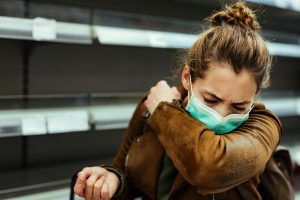 Prior to 2020, you may not have thought twice about an allergic reaction. Whether it was mold or dust in the winter, pollen in the spring and summer, or accidentally eating a strawberry, you likely knew why the symptoms kicked in.
Prior to 2020, you may not have thought twice about an allergic reaction. Whether it was mold or dust in the winter, pollen in the spring and summer, or accidentally eating a strawberry, you likely knew why the symptoms kicked in.
These days, it’s not so simple. The COVID-19 pandemic seems to have made every cough and sneeze a cause for concern.
Advertisement
Whether it’s a cold, flu, asthma, or allergies, COVID-19 might be the first thing you consider. But it’s not always a good idea to rush to conclusions. Think about your history, the symptoms, and whether it could be an allergy.
Several differences exist between an allergic reaction and COVID-19, the respiratory illness caused by a virus called SARS-COV-2.
This cousin of the common cold is likely to cause the loss of taste and/or smell (in place of congestion), fever, cough, shortness of breath, and muscle aches. It may also cause a sore throat, diarrhea congestion, runny nose, shivering, fatigue, and a lost appetite.
Sometimes it can be symptom-free, but carriers are still contagious,
A lot of those symptoms look familiar, don’t they? That’s why it can be rather difficult for even doctors to tell if COVID-19 or the common flu afflicts a patient.
Thankfully, your allergies might be a little easier to distinguish.
For starters, allergies are not a virus. They are an immune reaction to generally harmless environmental substances as if they were threats. Think foods, tree pollen, dust, dogs, etc.
Allergies are generally seasonal, and symptoms can flare-up for weeks or months, depending on exposure.
Advertisement
The hallmark symptoms of most allergies are a runny nose, itchy eyes, sneezing, and congestion. Sometimes you may lose your sense of smell because of congestion, but it will generally return once symptoms have subsided.
You will likely not experience fever, coughing, muscle aches, diarrhea, headaches, lost appetite, or fatigue. Shortness of breath may be a symptom of some acute allergic reactions.
Hopefully, that helps relieve some stress if your seasonal symptoms start appearing. But if you aren’t sure, don’t wait around to see what happens. Take the proper precautions – put on a mask and isolate – and get to the doctor for a COVID test.
